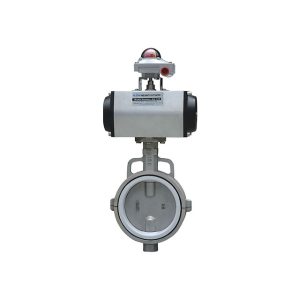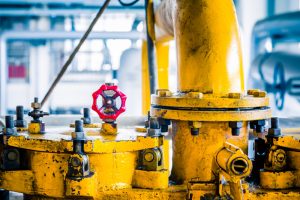Table of Contents
ToggleTypically, industrial valves are a major cause of fugitive emissions. Linear valves are particularly bad culprits. The mechanism of linear valves, which uses a rising or rotating stem to close, creates more friction, which in turn leads to emissions.
Many linear valves are also cost-effective compared to other types but are controversial in relation to environmental protection. So, fugitive emissions and API testing are extremely important in industrial processes.
The ISO 15848-1 standard covers the requirements for industrial valves and fugitive emissions measurement. The standard also covers leak tests and mechanical and thermal cycle testing procedures. This standard is also applicable to process valves.
ISO 15848-1 is the current fugitive emissions standard, and it is more stringent than API 622. Its temperature range is 500 and 260 degrees Fahrenheit. In addition to these requirements, API 622 also specifies a maximum limit for the number of emissions that a valve must emit. Both API 622 and ISO 15848-1 require valve manufacturers to requalify all previously qualified valves.
If you want to know more about fugitive emissions and API testing for valves, continue reading this article.
What Are Fugitive Emissions For Industrial Valve Systems?
If you’re wondering what fugitive emissions for industrial-grade valves are, you’ve come to the right place. The environmental effects of fugitive emissions are significant and contribute to global warming and pollution. Fortunately, there are many steps process facility operators can take to minimize these emissions. Routine leak detection and repair activities will help identify and reduce the rate of emissions. Additionally, they should choose industrial valves with a special sealing technology, such as an ISO-15848-certified one.
One way to minimize these emissions is by using sensors to monitor fugitive emissions. Typically, a series of sensors are mounted on a valve assembly. These sensors measure fugitive emissions in the process and compare them to preset limits. A digital valve positioner will translate this data into action and communicate warnings and status reports to the control system. Because the sensors are critical, accuracy is essential.
The proper design of valves minimizes the risk of leaks. Proper material selection and construction help minimize leaks. Operators in chemical plants and refineries must consider environmental regulations when selecting valves. In Canada, for example, fugitive emissions are a key consideration. This is because the oil sands are an example of an area that is particularly vulnerable to fugitive emissions. Because the emission rate can be high, selecting a valve that has a lower emission rate can help reduce emissions in the process.
As the fugitive emissions of industrial valves continue to rise, leading valve manufacturers have taken steps to minimize them. Using enhanced stem designs, packing solutions, and high-cycle operations, these companies are developing fast-acting valves that meet fugitive-emissions requirements. Some of these manufacturers have even gone as far as to demonstrate their valves to an independent agency. In addition to the fugitive emission requirements, these manufacturers have begun testing their valves independently. They have demonstrated to an independent agency that they meet or exceed the standards set for endurance testing. They have also demonstrated that their valves can withstand 500,000 cycles and pass endurance tests.
What Is API Testing For Industrial Valve Manufacturers?
If you’re unsure of what API testing is for industrial valves, let’s start with the basics. An API test is a type of pressure testing that evaluates the valve’s ability to operate under a specified temperature. API 624, for example, evaluates the Low-E performance of the valve over a simulated valve life cycle. In addition, API 622 tests the packing set for leakage.
While there are many types of testing for industrial valves, there are two standards commonly used. ISO 15848 is the most commonly used and accepted. API RP622 focuses on process valve packing and is an additional API standard. End-users may also have specific requirements. Once an API test is performed, the valve’s design and performance can be assessed by a third party. This testing ensures that the valve meets or exceeds the requirements of the API RP622 standard.
Another type of API testing is known as through-leakage testing. This test requires that the valve is able to withstand the pressures that a process will experience. To conduct the test, a valve must have a seal with at least two parts of the sealing surface. If a valve can’t withstand these pressures, it may not be safe for use in the process. To avoid these problems, the valve must be inspected every three years.
Another test is the packing fire test. This is commonly known as API 6FD. Both these tests are similar in many ways. In fact, they are often used together. API 6FD tests are virtually identical. The difference between the two is that 6FD reverses flow, whereas API 6FA operates the valve open and closes after a cooldown period. The API committee oversees API 6FA and API 6FD, and it is expected that these standards will merge into one standard.
Environmental Impacts of Fugitive Emissions
Fugitive emissions are gases released by oil and gas wells, including coal and natural gas. There are many sources of these emissions, but the main culprit is uncapped and abandoned oil and gas wells. Other sources of fugitive emissions include poorly sealed oil and gas wells and leaky pipelines. To understand the environmental impacts of fugitive emissions, consider some of the most common sources of fugitive emissions.
If you’re wondering why fugitive emissions have to be regulated, you need to understand what they are. Fugitive emissions are air pollutants that can contribute to climate change. If your site releases a significant amount of helium, you should conduct a leak detection survey to determine if you’re emitting this gas. EPA has established a leak detection program. The EPA requires this program to ensure compliance with fugitive emission standards.
The fugitive emissions produced by oil and gas companies are the largest source of fugitive emissions worldwide. The report by climate change organization Climate Chance found that oil and gas companies were the number one source of fugitive emissions in the United States. The Biden administration recently moved to review the rollbacks the Trump administration made to the Clean Air Act, including decisions limiting oil and gas methane emissions.
As the name suggests, fugitive emissions are uncontrolled emissions of gases from industrial processes. They occur due to leaks, faulty equipment, and evaporation. They are difficult to detect, and they often constitute a large percentage of overall emissions. In addition to air pollutants, fugitive emissions are responsible for a host of environmental issues. They may contribute to the formation of ozone, harm the environment, or both. Therefore, it’s important to avoid any activity that produces fugitive emissions.
How to Reduce Industrial Fugitive Emissions?
The uncontrolled emissions from process equipment, such as boilers and air conditioners, are known as fugitive emissions. These emissions may cause local air pollution, contribute to ozone formation, and harm the environment. Common fugitive emissions include carbon dioxide, methane, and perfluorocarbons. Some of these gases are also toxic, such as sulfur hexafluoride or nitrogen trifluoride.
Leaks in pressurized process equipment usually occur through mechanical seals, pipe connections, valves, or evaporative sources. Fugitive emissions are responsible for a high percentage of total emissions, even if the leakage is relatively small. Small leaks, however, can negatively impact the health of workers and the environment. To minimize these emissions, process operators should conduct routine inspections of the process equipment and replace it with industrial valves that have advanced sealing technology.
Valve leakage is a major source of fugitive emissions. Many of these leaks are due to outdated valves that weren’t designed with the latest technologies and materials. Valve leakage testing can identify which valves are the largest contributors to fugitive emissions. As a result, valve leakage technicians often call in to assess the cause of these leaks. The problem valves are often improperly installed, and the discharge piping puts excessive pressure on them.
Managing the sources of industrial fugitive emissions can be an effective way to improve productivity and reduce risks. While the risk of accidents and explosions is high, regular maintenance and intelligent engineering practices can help mitigate these risks. In fact, some countries require large industries to create a manual detailing their processes and procedures to reduce fugitive emissions. There are also manuals developed by environmental protection agencies for these processes.
The API-TSI standards for valves provide the industry with the necessary tools to mitigate these issues. These standards provide a framework to prevent fugitive emissions and ensure safe and reliable operation. The United States EPA has determined that most organic compounds in use have negligible photochemical reactivity, which is why API testing is important for fugitive emission prevention. However, if you do not have the proper tools to evaluate your valves for these requirements, you could face heavy fines.










